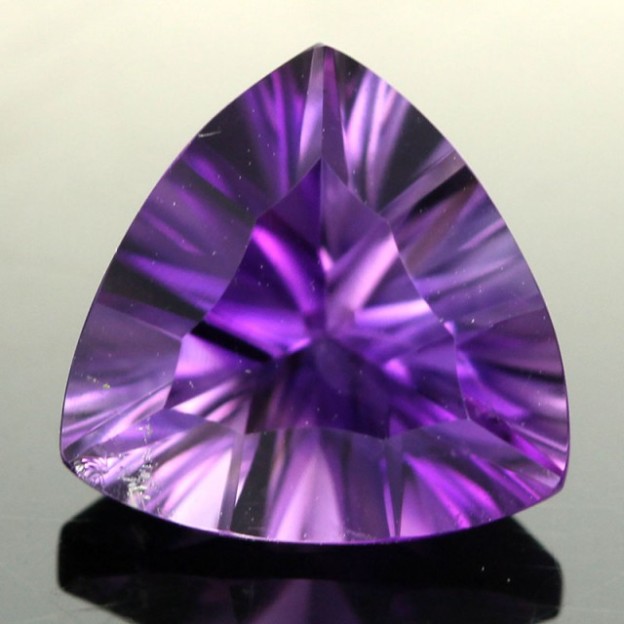God, instructing the Jews concerning the search for the Promised Land, commanded Moses to make a tabernacle with the tables of the Covenant, including amethysts. Jews love the amethysts instilled by the ancient Egyptians: violet with red tint stone adorns many Pharaonic regalia.
Greeks sparkling with purple light quartz was considered magical and attributed to him the ability to counteract alcohol. The Romans went even further, writing a touching legend about a nymph who did not want to surrender to Bacchus, and petrified as a sign of the firmness of her refusal. Sorry, Bacchus tried to revive the beauty, but the brilliant stone did not come to life, but only shone with the color of expensive wine…
Nowadays amethyst is loved for its accessibility and beauty. They love and cherish amethyst, in spite of its simple mineral origin, a stone of delicate quality…
The physical properties of amethyst coincide with all the parameters of quartz. Often the crystals of amethyst and quartz are fused into a single entity, and such specimens readily buy mineralogical museums.
The Meaning of the Stone Topaz
The esoteric properties of the stone are much more curious. The Greeks, who drank nothing stronger than wine, considered amethyst to be the petrified juice of a grapevine and believed the gem to be the master of intoxicating power. Throwing the amethyst into a bowl of wine, they waited for the stone to absorb intoxicating spells, leaving an exquisite bouquet of the drink intact.
Popular in ancient times, the legend developed in later times. In the Middle Ages, amethyst was attributed to the property of neutralizing any poisons (and not only alcohol, which at that time already, could be isolated from wine by evaporation). The pounded amethyst was mixed into food and drink, a ring with a stone was lowered into wine, bottles with healing medicines were plugged with amethyst plugs…
Did the stone help? For sure – especially if it was evenly and densely colored.
Color of amethyst
With the coloring of amethyst – like many quartz gems – it’s not easy. It is known that violet-red amethyst fades when heated, but is capable of returning a color close to the original, with subsequent gamma irradiation.
Physicists attribute this property of quartz to the special role of microscopic impurities. By themselves, micro inclusions scattered in the SiO2 array do not give color, but the interconnected electrons of silicon and iron atoms change their energy level and are intensively absorbed by light waves of certain lengths.
Having informed them of the energy (thermal), you can correct the absorption spectrum – as a result of which the color of the stone will change. That’s why there are amethysts in the world, the color of which is included in the range of red-violet tones but differs in the predominance of those or other shades. Pink, purple, blue-violet amethysts do not contradict its mineralogical nature, and from time to time occur in the natural environment.
Reinforced heating leads to … a change in the name of the stone. Remaining still quartz, heated to an orange-yellow color, amethyst becomes a citrine. In nature, such transformations happen. In some cases, a warm amethyst can turn green, which immediately makes it a praziolite.
Somewhere in the Brazilian outskirts are found praziolits of natural origin, but they do not differ in high jewelry quality. The fact is that the quartz is green before it is completely and irrevocably clouded by overheating. Therefore, natural praziolite, firstly, green is not noticeable, hardly noticeable; secondly – grayish and darkish; thirdly, one to one resemble a bottle of mineral water from the Caucasian spill. What creates all conditions for abuse…
Serious specialists in the coloring of stone, skillfully manipulating the heating and irradiation yet make the non-market amethysts acquire a green color, and in plenty, they are supplied to the jewelry market. The so-called “natural stone green amethyst” is natural only in the part of the origin of the stone itself. His color is artificial.

